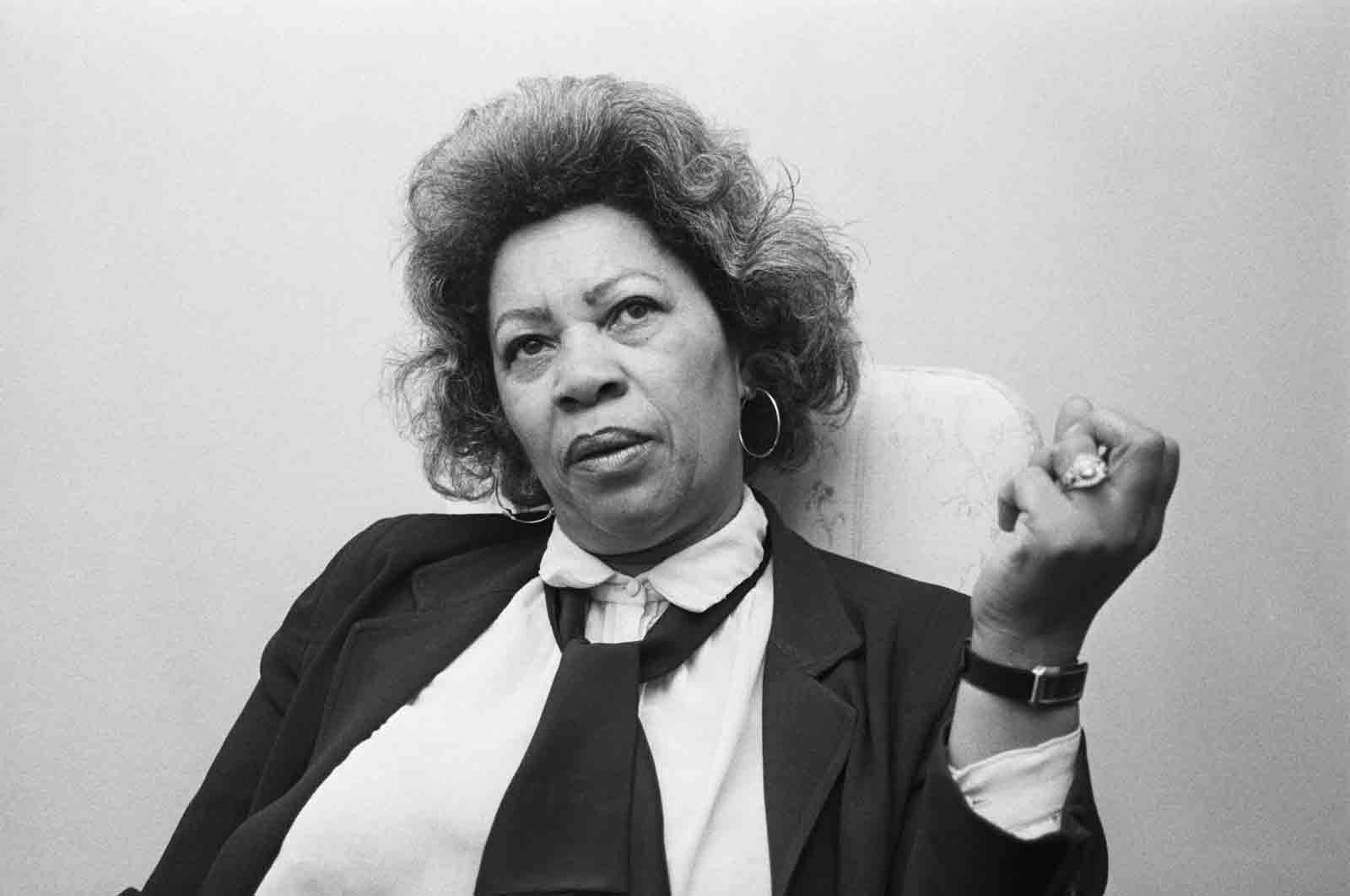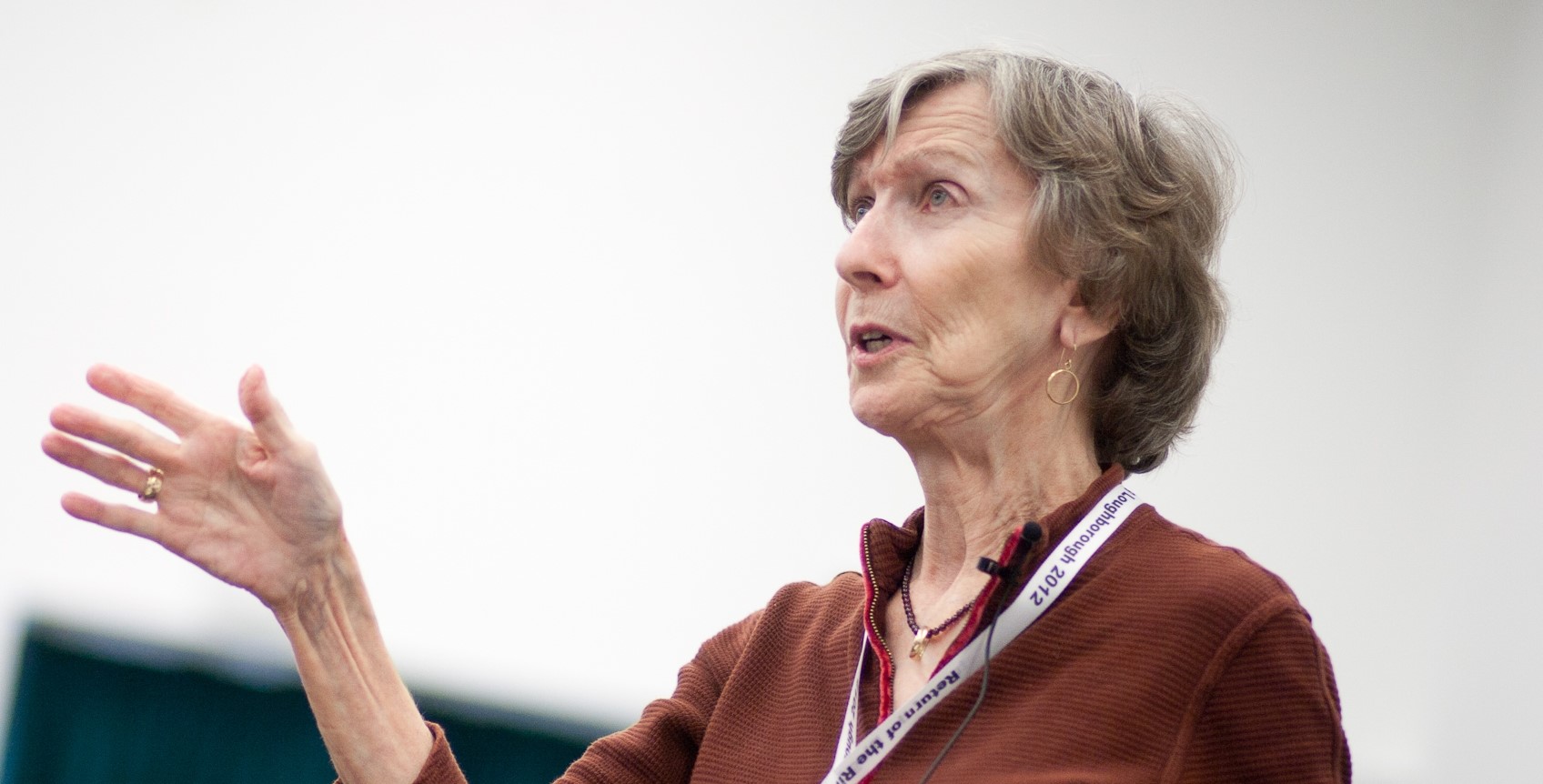We all know the ways of ideas. How sometimes a good idea will come to mind just after we needed it, ex post facto and extraneous. Sometimes even in the middle of things the opportunity for it passes us by, but the idea seems worth repackaging somewhere else, perhaps, so it sticks with us. Maybe it's as we're going down the stairs after the party that good ideas come too late. Or maybe that's just in French. Maybe it's while we're still up on the landing, that moment in The Dead, hesitating between alternatives, in suspension between past and present, speech and silence.
O, I am thinking about that song, The Lass of Aughrim.
For me, it's years and years later that a possibly good idea will percolate up, good as black coffee, from some long-lost opening in time, or fall like a flake of snow. And then I still won't get around to making something of it for more years and years.
In the case of individuals, the delays are striking enough; afterthoughts on the scale of peoples and of humanity as a whole, all the more so. Generations come, generations go, and the way history repeats is proverbial. Epimetheus (Afterthought) and his place in the myth is not so well known as Prometheus (Forethought), but he isn't the one having his innards pecked out, either. Sisyphus gets his retelling from the existentialist Camus. France hosts Baldwin and loses its colonies in Africa, where Dubois goes into exile, while the African American movement for rights and liberation in the US enacts its mid-to-late century successes and suffers its tragedies. A few summers ago, another movement for Black lives started bubbling up in mainstream consciousness. Some with hope, some with dismay heralded the racial reckoning upon us once more. Now the contest has moved to the arena of prestige fantasy and school board meetings, but the reckoning, in the root sense of counting up and recompense, is in no way accomplished.
How to compare the light and dark of Flieger and Morrison? First, we should note that each is a practitioner and a theorist, writer and teacher. There was an anecdote shared by Morrison's student, Mohsin Hamid, on the Ezra Klein show recently: "she used to say that you should keep your reader a half heartbeat ahead of the action of your novels, and that they shouldn’t know what’s coming next, but when it happens it should feel inevitable." Flieger's continued commitment to teaching and writing is likewise in evidence in her work with Signum University, just half a heartbeat away from anyone, anywhere, online. She kindly took the time to speak with me about my project investigating Philip Pullman's place in the wake of the Inklings, whose importance in literature she has done so much to explicate.
This combination of openness and demandingness is what draws me to them most as role models. For all the difference of their focus, both Morrison and Flieger are engaged with a project of expanding the circle of legitimacy and modeling the depth of thought with which readers and writers are rewarded by taking seriously, respectively, the presence of Blackness and whiteness in literature, and of eternal themes in fantasy and myth.
As I notice the themes of conversation, of teaching, of connection and valorization with an audience of fellow writers emerging here, I'm aware that many more writers--starting with Marilynne Robinson--would be appropriately included in this imaginary dialogue as well. For her part, Robinson instantiates in her fiction and criticism much of the overlapping of race and wonder that Flieger and Morrison study. She makes no secret of her aim to revendicate the soul in modern reality, and does so beautifully in Gilead, for instance, with a shared language of light and play. We have all the time in the world to widen the scholarly scope of the dialogue indefinitely, later. For now, let's hew to our two.
Toni Morrison, in Playing in the Dark, sets out collecting notes 'like a game,' notes on the portrayal of Blackness in literature which prove to illuminate the whiteness latent in the writing and the world (viii). She invites the reader to 'play along,' (ix) even as she proceeds, in a blues-inflected mode of wry humor and earnestness, assembling at once a foundational work of theory, and just one among many items in her literary 'toolkit' (x). The language of play blends with that of music in her lone short story, 'Recitatif' (its themes echoed in her student Hamid's splashy novel) (xi). Appropriating 'the words to say it' of other writers through this preface, well worth a read on its own if no time in the syllabus allows for more, she moves into the essays proper.
In the beauty of the silmarils, 'jewels' recalling the etymology of Tolkien's early work on Africans as seen or imagined by Europeans, there lies the inevitable 'fall' of the overweening sub-creators (108-9). Flieger highlights the motif of 'appropriation' in the most literal sense, the 'desire to possess,' as a theme Tolkien took to be the heart of his plotting and narrative causation (110). In the horrible figure of Ungoliant, consuming and perverting light itself, she indicates a monstrous fear at the back of all the hopeful happy endings and theoretical tendencies of her subject (112). Yet another overlooked instance of the same process is the spoiling of the original 'white ships' whose role in the main story of the Lord of the Rings is one of saving and healing (115).
Toni Morrison, in Playing in the Dark, sets out collecting notes 'like a game,' notes on the portrayal of Blackness in literature which prove to illuminate the whiteness latent in the writing and the world (viii). She invites the reader to 'play along,' (ix) even as she proceeds, in a blues-inflected mode of wry humor and earnestness, assembling at once a foundational work of theory, and just one among many items in her literary 'toolkit' (x). The language of play blends with that of music in her lone short story, 'Recitatif' (its themes echoed in her student Hamid's splashy novel) (xi). Appropriating 'the words to say it' of other writers through this preface, well worth a read on its own if no time in the syllabus allows for more, she moves into the essays proper.
First they were lectures; published with their full standalone force, complete with epigraphs, the three essays repay reading on their own and as a trio. Her 'map' immediately alludes to that other Other, the Native people of this 'New World,' to which we might append Donald Klein and Hisham Amin's review of the book, noting that Hemingway's 'Fathers and Sons' can be read as hinting at homosexuality as another dark other as well. But Morrison has to start somewhere, and so she sets out on the path to understanding Blackness, beginning in 'delight, not disappointment,' blazing the trail for us as she goes (4). The 'dark, abiding, signing presence' stands forth at every turn (5, cf 46). 'To read as a writer,' she acknowledges, means not only interpreting this presence signs, but seeing how this can mean telling a story out of the encounter (15). Seeing the 'fishbowl' that traps us all in societal pretension--but, we have to add, which also holds the water we swim in--Morrison limns a metaphor more playful than that of the Bell Jar of Sylvia Plath, and testifies to the experience of seeing through it with no less resolution and poetry (17 cf also DFW's graduation address).
'Black Matters' then turns to the case study of Willa Cather's last novel (18). Without having read the book, I can only marvel at the susceptibility of the author of My Antonia to fall into the weak plotting and sentimentality Morrison unfolds in her reading of Sapphira and the Slave Girl. Nancy, unnamed in the title, serves and finally escapes from the elderly Sapphira, who nevertheless retains Nancy's mother, Till, apparently unmoved. This culminates in the reunion between mother and daughter stage-managed, for a young Cather's benefit, by the mature writer, but which only confirms her failure to realize the humanity of her characters (27).
The second essay, 'Romancing the Shadow,' concerns the genre of Romance as practiced in American literature and its characteristic 'closed white images' over against 'the shadow' that haunts the dream (33). 'Romantic... prophylaxis' against reality: such is Morrison's assessment of the function of this mode of writing in Poe, among others (36). She wonders at such a 'playground for imagination' (38) turning, in a less naive register, to 'Rhetorical acid' effacing so effectively a complex dialectic of master and slave (46 cf 'serving and served' 90). Once more, her 'shadow' proves ineradicable, for it is cast by its unwitting observer (48). Lest we forget or give in to fatalism, though, she reminds us how 'knowledge... plays' even in our fumbling towards a free nation (49).
The case study here, from Poe, turns briefly to engage with Mark Twain. Morrison, like many readers, notes the jarring, then, like few if any, points out the ironic fitness of Huckleberry Finn's ending (55). Once more she recurs to the language of 'play... with life'; yet this 'play and deferment' ultimately proves Jim's maturity and well-earned freedom (57). 'Snow' becomes the referent of contemporary and near-contemporary white canonical authors for their meaninglessness in the absence of a deeper understanding of their black roots (58 cf The Dead and indeed The Lord of the Rings).
At last, in 'Disturbing Nurses and the Kindness of Sharks,' Morrison turns definitively to come to grips with Hemingway. Across a minefield of metaphor (63) and escape (66) littering the iconic author's work, which she deftly traverses on the strength of her reading it whole, not least across the previous two essays, in the light of the Blackness underlying our literature, Morrison comes to regard in a single circumlocution, where the white character usurps his black companion's agency in the phrase 'saw he had seen,' the whole willful blindness and ugliness of narrative racism (72). In the 'accusation of inhumanity' from Wesley, she perceives the 'lapse' of the author and his stand-in, admitting its truth (76). Morrison eventually even draws together those links we started out by noticing in her initial map of the territory: in Hemingway's unfinished late work, 'sexual play' (85) and racial othering, recurring to imagery of the 'Indian' (86), are bound up with the last gasp of yearning for a lost paradise. A 'mythologized' and 'racist literature' ours may be, but Morrison shows how it endures and how much it illuminates the culture we live in for all that (90).
On that note of myth, we pick up with Flieger's Splintered Light. Of the two authors, she is of course the less celebrated; of the two books, hers is the less influential. Yet, as the preface and introduction show, she is just as dedicated to the project of uncovering truth in unexpected readings of literature. She brings a spirit of seriousness and play to her approach to the question, 'Why read Tolkien?' (viii) and her account of his 'myth for England' (xiv). As she argues, the key to understanding his accomplishment lies in the overlooked Silmarillion.
The predominating image of the book, and Flieger's metaphor for reading it, is light, that 'glittering white' which is the unity and origin of colors (1, 46). Together with this, she naturally associates an energetic, life-giving heat or warmth, which connects with the struggles of Tolkien's family in South Africa, particularly his mother (2). These unities contain the essential dualities of Tolkien's nature, his hope and despair, visualized in the play of light and dark (4). The fascinating early work of Tolkien on the word for black people and their land in Old English comes in for brief discussion (8, recalled in the story of the lamps and trees later 63). Like her subject, Flieger is careful, exact and exacting (8). She takes Tolkien's student Simonne d'Ardenne at her word when she suggests that through his study and fiction alike, he 'broke the veil' and saw realms lost to others' sight (9).
From this introduction to the 'Man of Antitheses,' Flieger embarks on arranging foundational material from Tolkien's two great essays, on Beowulf and fairytales. The former is 'dark '(11), in her reading redolent of the 'shadow of despair' underlying all Tolkien's efforts (17). And yet, through this dark shines the 'cosmic' (17), much like the opening sequence of Final Fantasy VII in a later medium. The centrality of monsters, such as Grendel, because of the clarity of their reflections on humanity--this becomes Tolkien's great insight into the story of Beowulf and into story writ large, so far overlooked by the critics (18, but certainly well recognized by Morrison).
From the equally seminal 'On Fairy-stories,' Flieger singles out the importance of such 'recovery' in Tolkien's scholarship as well as his fiction (25). 'Technology' and 'the speech of beasts' come to reinforce our dependence on story, the one a push, the other a pull (26), and to the end of stories of this sort, 'eucatastrophe' or the good turn (27). For instance, when Snow White opens her eyes (28, though perhaps we can only fully recover the wonder of this moment in the light of reading whiteness back into it, with the aid of Morrison and scholar-practitioners since). Out of this 'reversal,' Tolkien and Flieger bear witness, we experience not only the promise but the actuality of future, eternal 'joy' (29)
For the central chapters which follow, Flieger endeavors to show how the eternal light, the human dark, and their myriad gradations collaborate in the unfurling of Tolkien's vision. We might single out the imagery of the color green (41) from among the movement from white to 'many hues' (43, 158), given the pressing importance now for an environmental-stewardship reading of fiction and the world through it. We can infer this through Tolkien's reimagining of the diminutive fairies as 'elves,' and their fascinating migrations and descent along the lines of 'race,' echoing a colonial empire crumbling in the course of Tolkien's life (51). Once more, we encounter that 'Green sun' unifying the language and literature, the scholarly and imaginative, for Tolkien as for Flieger (60) in the midst of many shades of linguistic change and visual shades of grey and black (70). Theories of 'Indo-European peoples' come in for comparison with the family trees of languages and peoples in Tolkien's legendarium (77). As the 'dark' grows and prevails, (82) still it is in service of the essential contraries of human nature (86, 83, or as on 87 correlates).
The movement from east to west proves fundamental in Tolkien's work, setting up the contrary movement towards the east in Frodo's quest (121, 124). The figure of the 'white lady,' likewise, has many iterations in his stories (122). Flieger's accumulation of evidence, with her patient application of the core prevalence of light and language across the examples, recovers from cliche such formulations as the movement from 'dark to light' (125) and the 'fall' (128). Her work, too, becomes a 'tapestry' (129) woven 'in the dark' (130). From an 'aristocracy of light' (131), drawn as they are by love and enchantment (133, 140), the elves proceed athwart the universal imperative toward darkness (145).
Only towards the end of the book does Flieger assign a place within this framework to the humble hobbits whom Tolkien found the 'accidental' heroes of his better-known stories. In their humility we have transmitted the 'unsullied light' of a reworked early poem on the morning star, Earendil (148), and clinging to their earthiness we have the 'dust' or 'mote' that Tolkien likened himself to back in the opening chapter's epigraph (150, 156, 7). With reference to the psychology of Jung, Flieger restates once more the urgency of confronting and accounting for our 'shadow' (151), and recognizing the meaning behind what we take to be 'invisible' (157). Finally, she identifies a counterpart to the ring in the 'phial' lighting the hobbits' way, drawing our attention to that fascinating way in which Galadriel abjures her love as perilous if it is not freely given and received (159). Over against the early poems of Earendil and 'Mythopoeia,' we have Frodo's Dreme and the dream of the veil rolling back (165).
Flieger concludes her work there, having bridged the then-inaccessible backdrop of The Silmarillion, Tolkien's poetry and scholarship on myth and language, with his perennially popular fantasies. She remarks, with Tennyson's Arthur, that 'The old order changeth' (171)--and this is well.
With such admirable scholarship to draw upon, where do we go from here? The work of Marilynne Robinson, her fiction and essays and her dialogues with President Obama; contemporary speculative fiction from NK Jemison or Colson Whitehead; or perhaps a talk by Marlon James, the seventh annual Tolkien lecture at Pembroke College, on why he turned from Booker-prize winning literature to fantasy, and is now engaged in creating a collective African mythology in response to Tolkien. Or, knowing me, most likely, inexorably, incorrigibly, back to Philip Pullman.





No comments:
Post a Comment